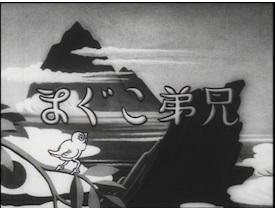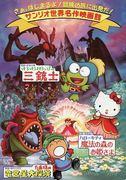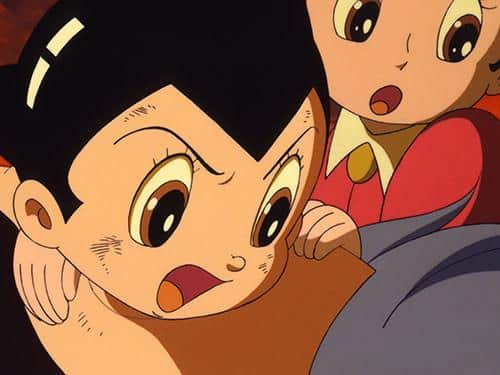Review of "Brother Little Bear": A moving story and charming characters

The appeal and reviews of "Brothers Koguma"overview"Brother Little Bears" is a Japanese animated film released in 1932. It is a 17-minute short animated film distributed by the Ministry of Education and directed by Sanae Yamamoto. It was produced as an original animated film and released in theaters. It was produced by the Ministry of Education and Yamamoto Manga Eiga Seisakusho. story"Brother Bears" is a story about the adventures of two little bears who live in the forest. The story depicts the older and younger bears facing various challenges while searching for food. The story is simple, with the two bears working together to solve the problem and ultimately reaching a happy ending, but it is filled with friendship, family love, and respect for nature. BackgroundThis work was produced as part of educational films in Japan in the 1930s. At the time, the Ministry of Education used animated films to teach children moral education and the spirit of protecting nature. "Brother Little Bears" was produced as part of this effort, and was intended to be screened in schools and public facilities. Director and production staffDirector Sanae Yamamoto is one of the pioneers of early Japanese animation, and his works occupy an important place in the history of Japanese animation. Yamamoto Manga Eiga Seisakusho is an animation production company founded by Sanae Yamamoto, and produced many educational and propaganda films. "Kyōguma no Kyoudai" is one of their representative works, and had a great influence on subsequent Japanese educational animation. Animation TechnologyConsidering the technical standards of the time, "Brother Little Bears" is highly regarded as an animation of extremely high quality. In particular, the depiction of the little bears' movements and expressions brings out the charm of hand-drawn animation to the fullest. The backgrounds are also realistic and beautiful, with the forest scenery and the ecology of the animals carefully drawn in minute detail. These technical elements not only enhance the visual appeal of the film, but also play a role in effectively conveying the theme of the story. Music and SoundMusic and sound are also important elements that enhance the appeal of "Brother Little Bears." The light-hearted music that matches the development of the story and the sound effects that realistically reproduce the movements of the little bears, combined with the visual expressions, draw the viewer into the world of the story. In addition, the skillful incorporation of natural sounds and animal voices also has the effect of making the forest ecosystem feel more realistic. Theme and Message"Brother Bears" is a work that deals with themes of friendship, familial love, and respect for nature. The story of the two little bears working together to overcome difficulties teaches viewers the importance of friendship. It also conveys the importance of respecting and protecting nature through the depictions of animals living in nature. These themes not only serve as an educational film of the time, but also resonate with modern viewers. Evaluation and impact"Brother Little Bears" is regarded as an important work in the history of Japanese animation in the 1930s. Its high-quality animation, which exceeded the technical standards of the time, and its storyline, which skillfully depicted educational themes, were highly praised by many viewers. This work also became a pioneer of educational animation in Japan, and had a major influence on subsequent works. In particular, animations with themes such as nature conservation and friendship are often created based on this work. From a modern perspectiveEven from a modern perspective, "Brother Little Bears" has not lost its charm. The beauty of the hand-drawn animation and the story's simple yet profound themes can be fully enjoyed by modern audiences. The film is also highly regarded not only for its role as an educational film, but also for its excellent entertainment value. It is particularly effective as a teaching material for teaching children the importance of protecting nature and friendship. Recommendations and related worksFor viewers who enjoyed "Brother Little Bears," we also recommend "Momotaro's Sea Eagle," also directed by Sanae Yamamoto, and "The Ant and the Grasshopper," which has a theme of nature conservation. These works are also highly regarded as works that depict educational themes while also being highly entertaining. In addition, among modern animation works, Studio Ghibli's "My Neighbor Totoro" and "Princess Mononoke" are also recommended as works that deal with themes of nature conservation and friendship. Through these works, you can reaffirm the importance of respect for nature and the importance of friendship. Conclusion"Brother Little Bears" is a Japanese animated film released in 1932, highly praised for its technical perfection and educational themes. Its story of friendship, family love, and respect for nature resonates with audiences of the time and today. As a pioneer of Japanese educational animation, this work has had a major influence on subsequent works. Through "Brother Little Bears," you can learn about the importance of protecting nature and friendship, while also having fun. |
<<: "Suimi-bune" review: A moving story and beautiful images
>>: Review of "Sora no Momotaro": A new adventure and a moving story
Recommend
The China Film Association recommends that online dramas with a cost of less than 4 million yuan adjust the high pay of the leading actors
Recently, the China Television Drama Production I...
The trailer for the movie "Oppenheimer" leaked and it will be released on July 21 next year
Recently, the first poster of Nolan's new fil...
The domestic monster disaster film "Raging Sea Spider" is scheduled to be broadcasted exclusively on iQiyi on October 3
The action disaster adventure movie "Spiders...
Well-known weekly magazine exposed that Hashimoto Kanna was bullied in the workplace and the agency’s statement was untrue
Weekly Bunshun, a well-known Japanese whistleblow...
"Top Gun 2" behind the scenes footage of aircraft carrier takeoff and landing
"Top Gun 2" is currently being screened...
The appeal and reviews of "Kenya Boy": The depth of an anime that depicts the brilliance of youth
Boy Kenya - Shounen Kenya ■ Public Media theater ...
Review of "Blue Fleet": An anime where you can enjoy the beauty of battleships and the drama of battle
"Blue Fleet": A grand war story anime w...
The first PV of the fifth season of the animation "Date A Live V" was released and will be broadcast in April 2024
The animated series "Date A Live", adap...
Momotaro of the Showa Era: The Appeal and Evaluation of a Timeless Anime Masterpiece
Showa Momotaro - Showa no Momotaro Showa no Momot...
"Soho Night" new promotional photos and stills sexy twins
Recently, the psychological thriller "Soho N...
Video blogger "Cyber Farm" plans to shoot a sci-fi comedy series to start filming this year
According to Russian media DTF, the high-quality ...
The appeal and reviews of the movie "Jujutsu Kaisen 0": An emotional experience that exceeds expectations
"Jujutsu Kaisen 0 the Movie": A moving ...
The Lord of the Rings: The Power of the Rings received a huge hit after its premiere
The first season of Amazon's hugely expensive...
The appeal and reputation of "Hello, Anne": A moving story and character analysis
The appeal and reputation of "Anne": it...
Tianxia Bachang's "Ghost Blows Out the Light" copyright case ruled that Qingdao Publishing House infringed
Recently, lawyer Wang Yun revealed the result of ...









